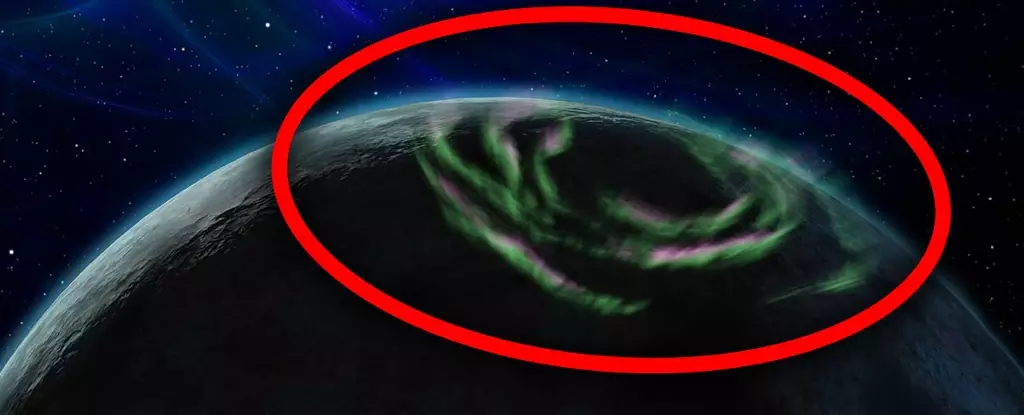In recent months, we have been captivated by the stunning displays of aurora lights on our own planet. These mesmerizing lights are caused by charged particles from the Sun interacting with our atmosphere. However, scientists now speculate that even exoplanets around pulsars, the remnants of massive stars, may also exhibit aurora phenomena. The intriguing possibility of detecting aurora on these distant planets is explored in a new paper by a team of Swiss scientists, who have conducted simulations to estimate the electromagnetic radiation emitted by these exoplanet-pulsar systems.
The Life Cycle of a Pulsar
Pulsars are the remnants of massive stars that have completed their life cycles. Throughout a star’s life, it synthesizes heavier elements in its core, balancing the outward force of thermonuclear pressure with the force of gravity. However, as the star evolves, gravity eventually triumphs, causing the star to implode and explode in a shockwave. All that remains is a rapidly rotating gigantic neutron star that emits a beam of radiation as it rotates. These beams of radiation are what we refer to as pulsars.
The discovery of exoplanets around pulsars was a groundbreaking achievement. By studying the pulsar’s radiation, astronomers detected slight irregularities in their otherwise rhythmic pulses. These irregularities were attributed to the presence of planets orbiting the pulsar. While the majority of pulsars travel through space alone, it is estimated that around 0.5 percent of them have planetary companions.
The Swiss research team delves into the magnetic interactions between pulsars and their planets in their study. Their simulations focused on millisecond pulsars and the planets orbiting them. The researchers explored the potential outcome of detecting these exoplanets using radio emissions. In their simulations, they studied two types of planetary candidates: those with conducting surfaces and those with electrically uncharged surfaces.
Detectability of Exoplanets with Current Technology
The research team discovered that the density of radio flux emitted by these exoplanet-pulsar systems ranges from 0.1mjy to 30mjy (millijansky units). They concluded that the frequency of the emitted radio flux would be above the absorption level of plasma but below the blocking level of the ionosphere. This finding is significant because it suggests that current radio telescope technology is indeed capable of detecting planets orbiting millisecond pulsars.
The Low Frequency Array (LOFAR) and the future developments of the Square Kilometre Array (SKA) are two radio telescope projects with the potential to achieve a minimum sensitivity of around 0.1mjy and 0.001mjy, respectively. This means that these cutting-edge telescopes possess the capability to observe and study exoplanets around millisecond pulsars.
Apart from detecting the exoplanets themselves, the Swiss scientists also discuss the intriguing possibility of detecting aurora on these distant worlds. By simulating the magnetic environment of exoplanets around pulsars, the researchers speculate that these planets may also experience aurora phenomena. If this hypothesis holds true, it opens up a new avenue for studying aurora on celestial bodies beyond our own planet.
The possibility of detecting aurora on exoplanets around pulsars is an exciting prospect in the realm of space science. The Swiss research team’s simulations have shown that with current radio telescope technology, we have the capability to observe planets orbiting millisecond pulsars. Furthermore, these observations may also lead to the detection and study of aurora on these distant worlds. The future developments of telescopes such as LOFAR and SKA hold great potential for further unveiling the mysteries of pulsar-exoplanet systems and the magnificent phenomena they may exhibit.


Leave a Reply